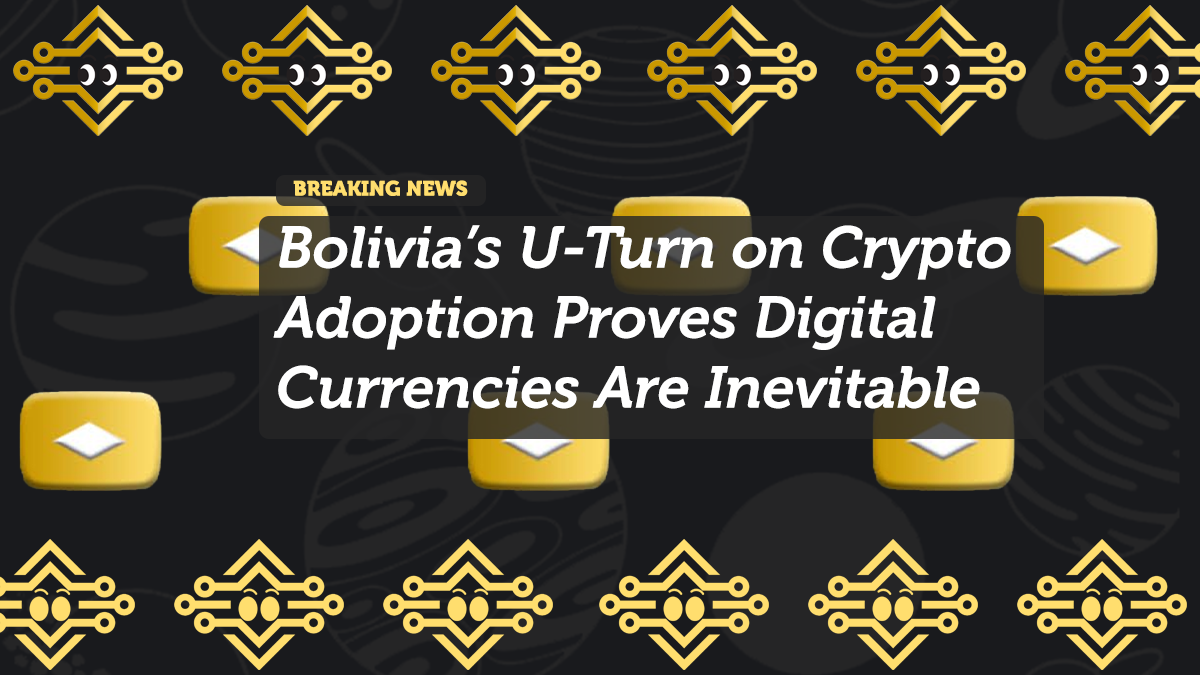
Bolivia’s U-Turn on Crypto Adoption Proves Digital Currencies Are Inevitable
Cryptocurrency is no longer just an experiment or a fringe movement. It’s now part of global finance—and even governments that once swore it off are starting to pivot. The case of Bolivia, a South American country that once issued a blanket crypto ban, is the latest—and perhaps clearest—proof of this irreversible shift.
This week’s Latam Insights Encore unpacks how Bolivia’s full-circle transition from crypto opposition to digital asset integration is signaling a broader trend across Latin America and beyond.
From Crypto Pariah to Pioneer: Bolivia’s Journey
Back in 2020, Bolivia’s Central Bank (BCB) issued one of the strictest anti-crypto stances in the world. The decree:
- Banned financial institutions from marketing, using, or trading cryptocurrencies
- Prohibited blockchain-based assets in the national payment system
- Was justified as a way to protect the Bolivian economy from “financial contagion”
At the time, Bolivia was grouped among the most hostile nations toward crypto, alongside Algeria and Morocco.
But in June 2024, that narrative flipped.
Ban Lifted, Volume Doubled
Once the ban was lifted by the Bolivian Central Bank, adoption surged.
Within three months, crypto transaction volumes in the country more than doubled, showing clear pent-up demand. The public’s hunger for decentralized tools had been building under the surface—and once the gates opened, activity exploded.
This wasn’t a passive shift. The Bolivian government and financial authorities started actively exploring crypto’s strategic utility.
Energy, Reserves, and Real-World Crypto Use
Bolivia didn’t stop at simply lifting the ban. By March 2025, it was already piloting new use cases:
Key highlights:
- Testing crypto payments for energy imports—especially crucial for a resource-rich country that depends on power to drive production.
- Exploring the use of crypto reserves to maintain U.S. dollar liquidity and bypass currency pressure in global markets.
- Announcing plans to design a central bank digital currency (CBDC) as part of an international settlement strategy.
These are not speculative memecoin plays. This is state-level infrastructure planning—leveraging crypto to hedge macroeconomic risks and enhance foreign reserve management.
What Bolivia’s Pivot Means for Latin America
Latin America has long been a region where economic instability and currency devaluation are regular themes. This environment makes digital currencies, especially Bitcoin and stablecoins, incredibly attractive.
Countries like Argentina, Venezuela, and Brazil have already seen grassroots-level adoption.
But Bolivia’s shift is different. It signals top-down integration, including:
- Public sector engagement
- Institutional adoption
- State-backed pilots and policy change
And it’s likely that Bolivia is not the last domino to fall.
The Bigger Picture: Global Adoption Momentum
Bolivia’s case is part of a larger wave:
- Nigeria once restricted crypto but is now doubling down on its CBDC and stablecoin regulation.
- India moved from banning to taxing and regulating digital assets.
- China, while cracking down on private crypto, continues to promote its digital yuan globally.
The pattern is clear: resistance gives way to regulation and strategic adoption.
Final Thoughts: Crypto Adoption is No Longer Optional
Bolivia has gone from a crypto ban to exploring CBDC development and energy payments in digital assets—all within a few years.
This transformation shows that even the most reluctant governments are starting to see the practical value of digital currencies—not just as investment tools, but as strategic national assets.
In the broader Latin American context, this is a critical turning point. The race is on—not just to adopt crypto—but to define how it’s used, regulated, and scaled.
Because as Bolivia just proved, digital currency isn’t just coming—it’s already here.
















